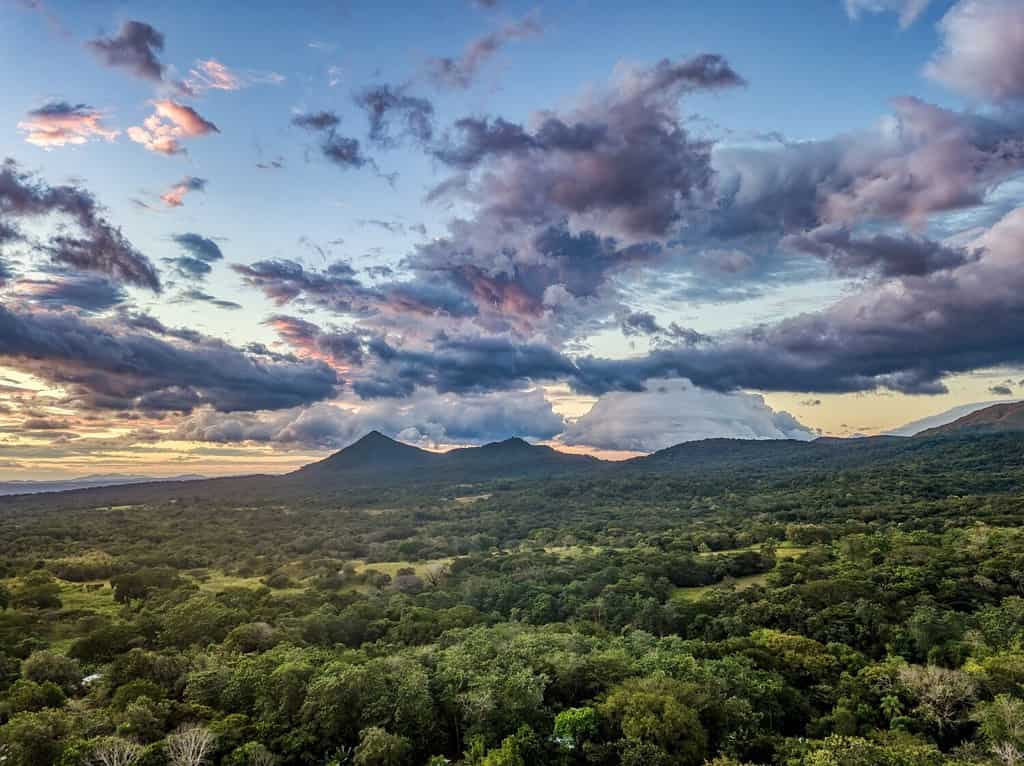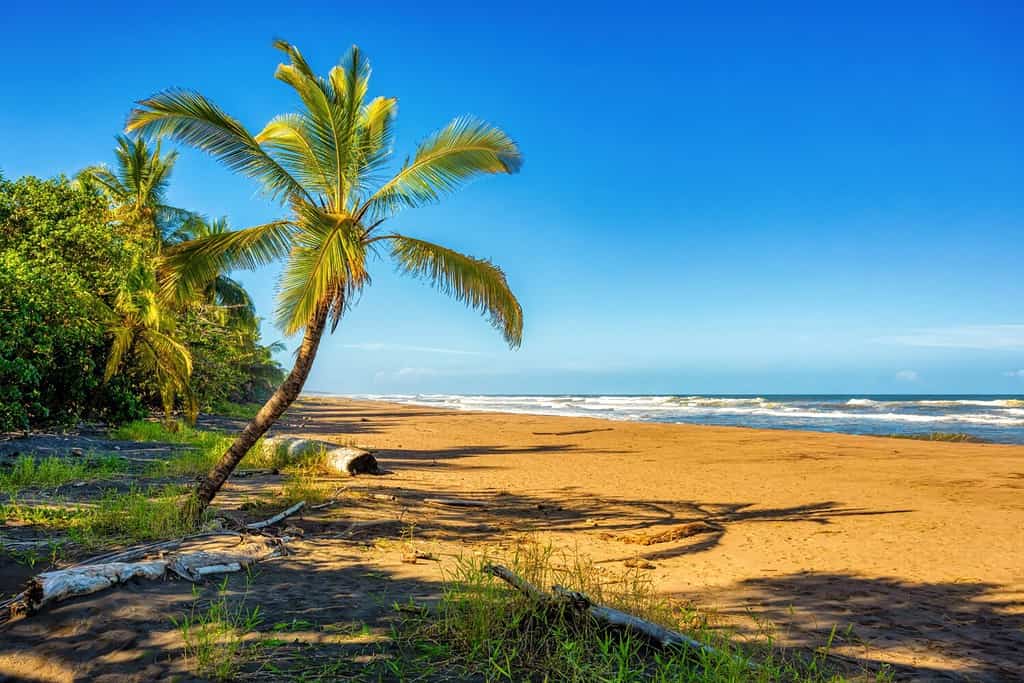Quick Answer:
- It rains a lot in Costa Rica because its position between the Pacific Ocean to the west and the Caribbean Sea to the east makes it susceptible to the monsoon season.
- Costa Rica suffers from climate change through cyclones, floods, landslides, and sea level rise.
- The rainy season in Costa Rica lasts from spring (around May) till autumn (around November), with September and October being the wettest months.
Pura Vida! That’s a common saying Costa Ricans like to utter because, indeed, life is beautiful and we should live to the fullest! If you’re thinking of visiting Costa Rica during the rainy season, you will experience life at its finest. The rain could affect your tourist activities, but that’s how life is. We adjust and move forward. In the meantime, you can look up at the sky and see a rainbow when the rain stops and the sun starts to shine. And then look at the view and you will see green everywhere — its hills, mountains, jungles, and forests, all luscious, green, and beautiful!
The rainy season in Costa Rica is nothing like other places like Bali’s rainy season, but it can rain torrentially every once in a while, especially in the wetter months of September and October. We’ll go through the details of when the rainy season is in Costa Rica, what to expect when you’re there, and why it rains so much. We will also give you some extra tidbits to prepare for your trip to Costa Rica, including fun things to do and what to eat.

The population of Costa Rica is 5.1 million, making it the 18th most populous country in Latin America.
©SevenMaps/Shutterstock.com
When Is the Rainy Season in Costa Rica?
The rainy season in Costa Rica usually begins in the spring (around May) and continues till the autumn (around November). The dry season is from December to April. The best time to go is during the dry season and tourists from around the world flock to Costa Rica during this time. They take advantage of the good weather.
However, if you’re wanting to visit Costa Rica during the rainy season, things will be cheaper, as it’s the off-season. It’s also perfect because you will experience the country with very few tourists.
The rainiest months in Costa Rica are September and October. What should you expect? The average rainfall throughout the year is 100 inches. Usually, it will rain nonstop all day, but sometimes it will rain sporadically throughout the day. It’s always a risk that it will rain hard, so it’s best to prepare yourself.
Why Does it Rain So Much?

Unlike its neighbors in Latin America, Costa Rica is one of the most politically stable Latin American countries.
©Artush/Shutterstock.com
Costa Rica is a country between the Pacific Ocean to the west and the Caribbean Sea to the east. There is a monsoon season that can drench the country during the wetter months, especially in September and October. Climate change, unfortunately, has been a cause of much change in weather in recent years. According to the Climate Change Knowledge Portal of the World Bank, Costa Rica is in a vulnerable position to suffer from climate change through cyclones, floods, landslides, and sea level rise.
Costa Ricans have dedicated strongly to ensuring their tourism sector is ecologically friendly. They want to protect the rainforests and natural habitats that live in the country. Sadly, the biggest losers in our climate change disaster will be Costa Rica’s biodiversity.
Prepare for Your Trip to Costa Rica During the Rainy Season
If you’re preparing to go on a trip to Costa Rica during the rainy season, there are a few things you have to prepare before your flight to ensure a stress-free trip.
- Always bring an umbrella in case it rains hard. And pack closed shoes while you’re at it.
- Buy a sturdy rain jacket because it wouldn’t be a good situation if your clothes got wet while exploring Costa Rica’s natural parks.
- During lots of rainfall, bring a book so you can cozy up on your balcony or the room you’re staying in.
- Bring mosquito spray because, during the rainy season, those flying insects will be buzzing around much more frequently.
Fun Activities in Costa Rica

Costa Rica has many species of monkeys — the
howler monkey
and the white face monkey, among others — in its national parks.
©Artush/Shutterstock.com
The great part about visiting Costa Rica during the rainy season is that you get to experience things that don’t happen during the dry season. You see, the rainy season brings wildlife into the country. Sea turtle nesting and whale and dolphin watching are just some of the animals you can spot! If you have the chance, go to Tortuguero National Park. You can see the incredible biodiversity in Costa Rica’s jungles and tropical forests.
There are also 16 volcanoes in Costa Rica and a few of them are active. If you’re an adventurer and risk-taker, check out some of those volcanoes on your nature tours. The landscapes from the volcanic activity create such beauty that is a sight to see.
For those who are more city folk, there is much to do in San Jose, Costa Rica’s capital. Learn about the country’s history and rich culture by going to the National Museum, the San Jose Central Market, and the Museum of Contemporary Art and Design.
Things to Eat in Costa Rica
Like many Latin American countries, Costa Ricans’ staples in the food department are rice and beans. So for breakfast, try gallo pinto. The rice and beans are mixed with spices and veggies. Pair that with a Costa Rican coffee and your world will be perfect!
The most famous and traditional dish in Costa Rica is the casado. Served with rice, beans, fried plantain, and a salad, you’ll get a meat of your choosing. And for dessert, have an arroz con leche, a tasty delight that is rice mixed with milk, cinnamon spices, and sugar. Craving comfort food? Look no further than an olla de carne. It’s a beef stew with corn, cassava, taro root, carrots, and other ingredients.
When you’re on your nature hikes and you want something on the go, pack some patacones (flat, deep-fried plantains). That will get you through that treacherous walk!
Fun Facts About Costa Rica

There is 0% deforestation in Costa Rica. That is an amazing feat!
©iStock.com/Parkol
- Costa Rica is one of the few countries in the world that doesn’t have a military.
- The country is one of the most environmentally friendly nations in the world, with 98% of Costa Rica running on renewable energy.
- Although the country is small, it has about 5% of the world’s biodiversity.
- The Costa Rican flag contains three colors: blue, which stands for the sky; white, which stands for peace; and red, which stands for the blood of the people.
- As an environmentally conscious nation, Costa Rica has set aside 25% of its land for natural parks, more than any other country in the world.
- The two-toed sloths and three-toed sloths are the national animals of Costa Rica.
Conclusion
Costa Rica is a wonderful place to visit. The rainy season can make it seem more magical as it creates an atmosphere unlike any other. It’s a place you can get lost and experience nature at its finest. The way Costa Ricans take care of their country and the biodiversity that lives there is top-notch and respectable. It’s a place where you can eat good food, see historical sights, and learn about a dynamic and happy culture.
Costa Ricans will teach you that life is life and that happiness and love are the only things truly worth it in our temporary lives. You will learn many things, but most of all, the power of positivity. Costa Rica is “pura vida”, as the locals say. Life will be enjoyable, fun, and just plain amazing. If you decide to go in the rainy season, all you have to watch out for is mosquitos, but you will still have the time of your life.
The photo featured at the top of this post is © CL-Medien/Shutterstock.com
Thank you for reading! Have some feedback for us? Contact the AZ Animals editorial team.






